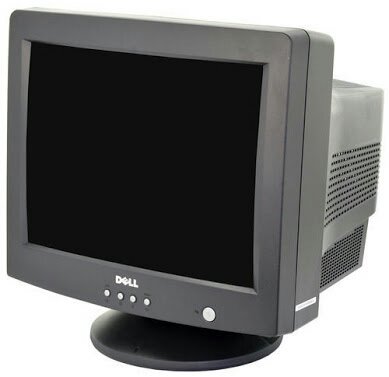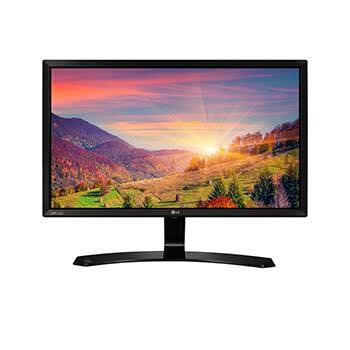Cathode Ray Tube (CRT)

This monitor uses a Cathode Ray Tube (CRT). CRT tube creates an image on the screen using a beam of electrons. CRT consists of one or more guns that fire a beam of electrons inside the screen. The screen is coated with very tiny Phosphor dots from inside. The beam of electrons repeatedly falls on the surface of screen. Every beam fall takes only a fraction of second. CRT in color monitors consists of three guns. These guns generate red, green and blue (RGB) colors. The other colors are generated with a combination of these three colors. Nowadays, most of the CRT monitors are replaced by Flat Panel Monitors.
Flat Panel Monitors
Flat Panel Monitors take less space and are lightweight. These monitors use much less power than CRTs. It does not emit harmful radiations. It is much expensive than CRT. Notebook computers, PDA and cellular phones use flat panel monitors. Flat panel monitors are available in different sizes such as 15”, 17”, 18” & 19” etc.
Flat panel display is made up of two plates of glass. These plates contain a substance between them. The substance is activated in different ways.
There are types of technologies used in flat panel display screens.
Liquid Crystal Display

Liquid crystal display screen contains a substance called liquid crystal. The molecules of this substance line up in such a way that the light behind the screens blocked or allowed to create an image. LCDs provide a sharper picture than CRTs and emit less radiation. LCD displays requires less power and take up less space than CRT.
Light Emitting Diode (LED)

An LED Monitor (short for Light Emitting Diode) or LED display is an LCD Monitor that uses light emitting diodes for back lighting. The first LCD Monitors used cold cathode fluorescent lamps instead of LEDs to illuminate the screen
Gas plasma Display

Gas plasma display uses gas plasma technology. This technology uses a layer of gas between two glass plates. The gas release ultraviolet light when voltage is applied. The pixels on the screen glow due to this ultraviolet light and form an image. Plasma display is available in the sizes of upto 150 inches wide. It provides richer colors than LCD monitors but are more expensive. That is why, it is not commonly used. It provides higher display quality. This type of monitor can hand directly on a wall.
Touch Screen Monitors
Touch screen monitors are used for input as well as output. A touch screen is a special type of visual display unit. It has a grid of light beams or fine wires on the screen. It lets the user to interact with a computer by the touch of a finger rather than typing on a keyboard or moving a mouse. The user enters data by touching icons or menus identified on the screen.
Most touch screen computers use sensors to detect touch of a finger. Touch screen is well suited for simple applications like ATM. It has also become common in department stores and supermarkets.
Types of touch Screen Monitors

There are different types of touch screen technology. The most common types are Resistive, Surface wave & Capacitive.
Resistive Touch Screen
This monitor usually has a coat of thin electrically conductive and resistive layer of metal. A change in electrical current occurs when it is pressed. The input can be processed by a computer. These monitors are the most popular types of touch screen monitors used today. They are usually not affected by dust or liquids which make them very reliable.
Surface Wave Touch Screens
These monitors use ultrasonic waves to process input from the screen. These waves flow over the touch screen. The wave is absorbed and processed by computer when a person touches the pad.
Capacitive Touch Screen
These screens are coated with indium tin oxide. This material provides continuous current across the screen. The current can be measure by the processor when the pad is touched. It is usually used with a bare finger instead of stylus. These screens have high clarity and are not affected by dust. Nowadays most of the smartphones have Capacitive Touch screens.



